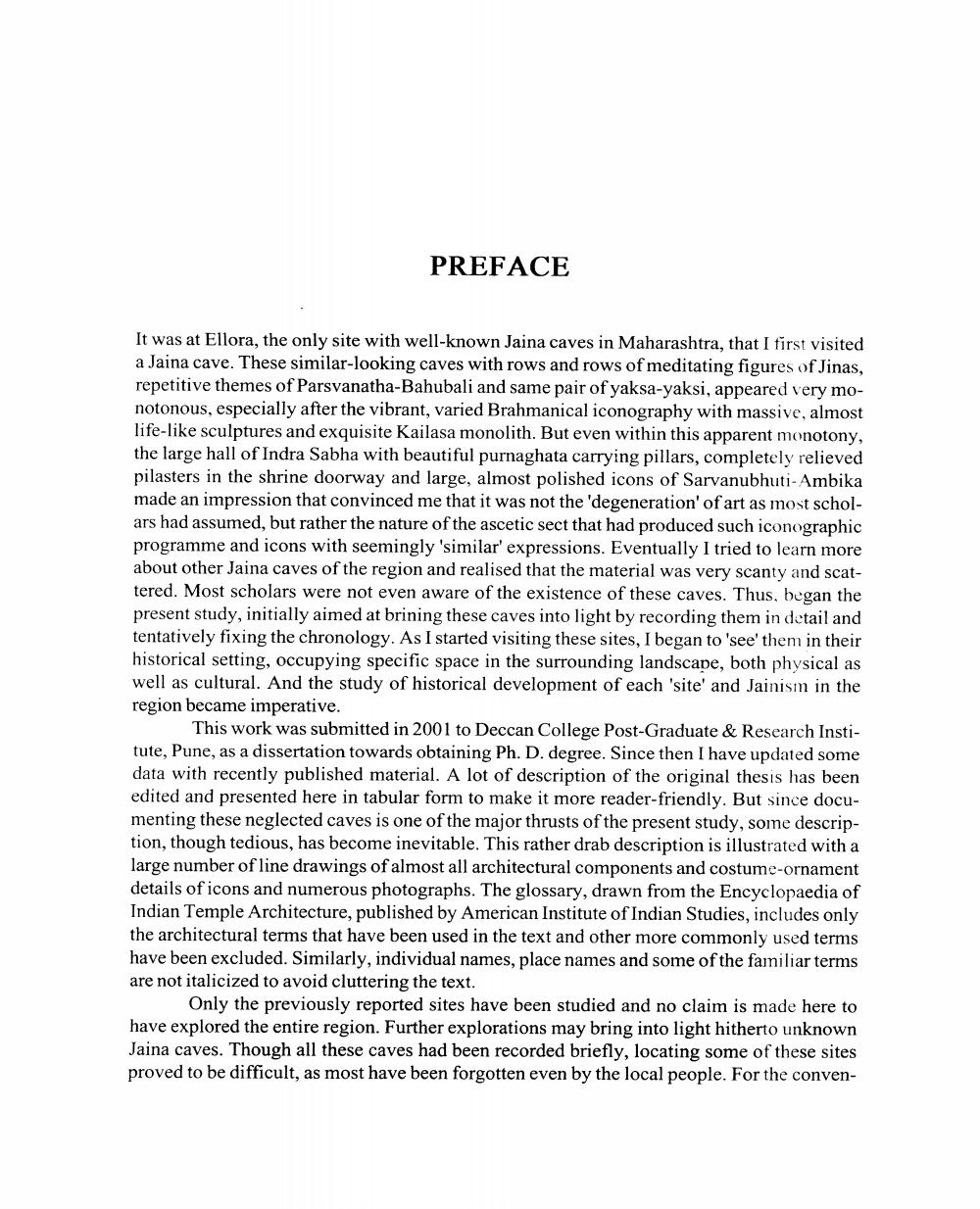Book Title: Jaina Rock Cut Caves In Western India Part 01 Author(s): Viraj Shah Publisher: Agam Kala Prakashan View full book textPage 9
________________ PREFACE It was at Ellora, the only site with well-known Jaina caves in Maharashtra, that I first visited a Jaina cave. These similar-looking caves with rows and rows of meditating figures of Jinas, repetitive themes of Parsvanatha-Bahubali and same pair of yaksa-yaksi, appeared very monotonous, especially after the vibrant, varied Brahmanical iconography with massive, almost life-like sculptures and exquisite Kailasa monolith. But even within this apparent monotony, the large hall of Indra Sabha with beautiful purnaghata carrying pillars, completely relieved pilasters in the shrine doorway and large, almost polished icons of Sarvanubhuti-Ambika made an impression that convinced me that it was not the 'degeneration' of art as most scholars had assumed, but rather the nature of the ascetic sect that had produced such iconographic programme and icons with seemingly 'similar expressions. Eventually I tried to learn more about other Jaina caves of the region and realised that the material was very scanty and scattered. Most scholars were not even aware of the existence of these caves. Thus, began the present study, initially aimed at brining these caves into light by recording them in detail and tentatively fixing the chronology. As I started visiting these sites, I began to 'see' them in their historical setting, occupying specific space in the surrounding landscape, both physical as well as cultural. And the study of historical development of each 'site' and Jainism in the region became imperative. This work was submitted in 2001 to Deccan College Post-Graduate & Research Institute, Pune, as a dissertation towards obtaining Ph. D. degree. Since then I have updated some data with recently published material. A lot of description of the original thesis has been edited and presented here in tabular form to make it more reader-friendly. But since documenting these neglected caves is one of the major thrusts of the present study, some description, though tedious, has become inevitable. This rather drab description is illustrated with a large number of line drawings of almost all architectural components and costume-ornament details of icons and numerous photographs. The glossary, drawn from the Encyclopaedia of Indian Temple Architecture, published by American Institute of Indian Studies, includes only the architectural terms that have been used in the text and other more commonly used terms have been excluded. Similarly, individual names, place names and some of the familiar terms are not italicized to avoid cluttering the text. Only the previously reported sites have been studied and no claim is made here to have explored the entire region. Further explorations may bring into light hitherto unknown Jaina caves. Though all these caves had been recorded briefly, locating some of these sites proved to be difficult, as most have been forgotten even by the local people. For the convenPage Navigation
1 ... 7 8 9 10 11 12 13 14 15 16 17 18 19 20 21 22 23 24 25 26 27 28 29 30 31 32 33 34 35 36 37 38 39 40 41 42 43 44 45 46 47 48 49 50 51 52 53 54 55 56 57 58 59 60 61 62 63 64 65 66 67 68 69 70 71 72 73 74 75 76 77 78 79 80 81 82 83 84 85 86 87 88 89 90 91 92 ... 412
